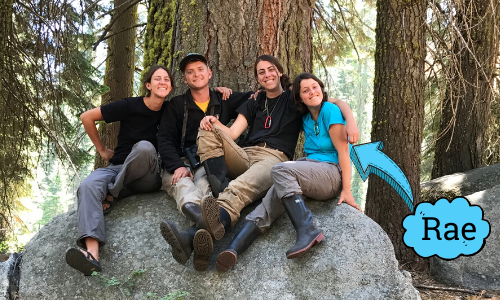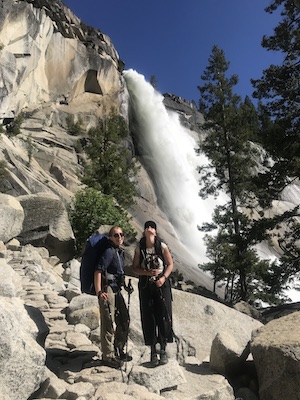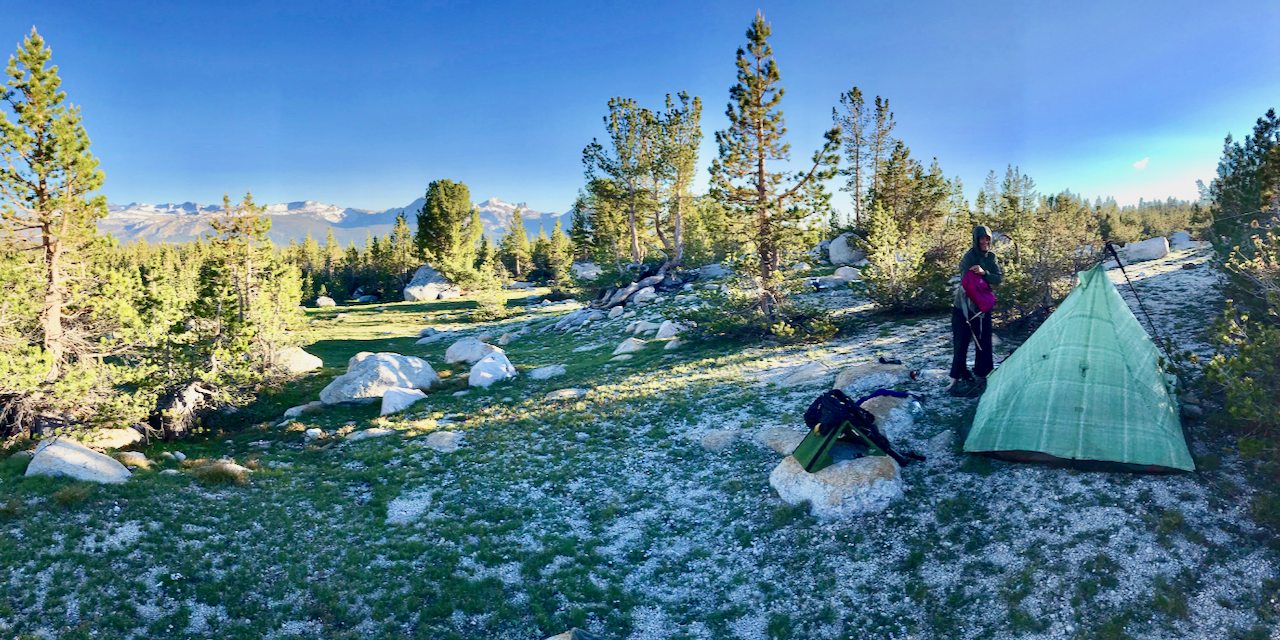Rae Engert spent the summer of 2019 hiking and birding the granite domes, canyons, sequoia forests and high country of Yosemite, King's Canyon and Sequoia National Parks. Engert led the Sierra Parks Bird Monitoring Crew which is jointly managed by IBP and the the National Park Service's Sierra Nevada Inventory & Monitoring Network. The Inventory and Monitoring Network is in charge of keeping track of the national parks’ “vital signs”. Birds are considered one of those vital signs, and the crew gathers information about bird populations in all areas of the parks, ranging from highly accessible, crowded areas such as roads and campgrounds, to remote areas that are a two days hike from any trailhead.
How long have you worked with IBP?
This was my 3rd season working for IBP, but my first as a “biologist”. My first season (also my first field job after graduating from UC Santa Cruz) was as a volunteer bird bander at the Yosemite MAPS station. I had the most amazing crew and they all returned the following year, but I went over to the backcountry point-counts crew in Yosemite for my 2nd season. Then I got the crew leader position for my 3rd season in Yosemite.

The 2017 Yosemite MAPS banding crew. From left to right: Melissa Simon, Kurt Ongman, Krista Fanucchi, and Rae Engert.
In between spring seasons working for IBP, I was an intern for the Ventana Wildlife Society one winter in Big Sur, where I helped release and monitor California Condors and lived at a lighthouse. The following Fall season (last year), I worked as an intern on the Farallon Islands banding and monitoring Burrowing Owls.
What was the best part of your job as Sierra Parks crew leader? What was the hardest part?
I really love the 3-week training period. It was such a blast when I was a volunteer, and then it was even more exciting to have a part in leading the training. I love coming up with funny mnemonics for all the bird songs, and also hearing what other people come up with. It’s just such a good time. It’s pretty amazing that our job is to go birding every morning.
During our first week of point counts in mid-May, my field partner and I both caught a nasty cold and it snowed and rained all week. We had to postpone one of the surveys when we were under the weather, but we had ample time to catch up later. The substantial snowpack and flooded rivers kept us out of the majority of our sites until later in the season. The hardest part was waiting around for the snow to melt.
Can you describe a typical day of work as Sierra Parks crew leader?
We planned where we would go each week based on what sites were accessible (as in not completely buried in snow). Then, we would lace up our boots, don binoculars and head out into the backcountry for 1, 2, 5, or even 7 days. Sometimes, we would meet with an obstacle like a treacherous river, and turn back, but generally we would make it to the transect origin of the site we wanted to survey the following morning. Then we would be up bright and early to do point count surveys along the transect, with each surveyor going in opposite directions. After our surveys, we would hike to the next transect origin, eat a huge amount of macaroni and cheese, and usually fall asleep before dark!
When did you first become interested in birds?
I took an ornithology class for fun at my local community college when I was in high school. We went on birding field trips every weekend, and I became really excited about birds. The average age of students in the class was probably around 50 years old! I ultimately failed the class because I was focusing on my high school classes, but years later I took ornithology at UC Santa Cruz and got an A!
Why did you decide to go to graduate school?
For the past three years, I’ve been getting loads of experience by doing field jobs. Now I have expertise in a number of different methods for data collection. One thing I have been missing out on is the academic side of the research and monitoring projects that I have been a part of. I’m hoping to open up more doors for myself by getting some practical experience in experimental design, data collection, lab methods, data analysis, and writing scientific papers. Part of me wants to go back to doing field jobs after graduating, because it’s so fun. Eventually though, I may want to pursue a PhD and start an academic career.
What university are you attending in Sweden? Do you know what you'll be studying?

Mikaela Kropp and Rae Engert at Nevada Falls. Photo courtesy of Rae Engert.
I just started a 2-year masters program in Animal Ecology at Lund University. The degree is structured a little different than a masters program in the US. In Sweden, the first year is designated for course work, and I will have a chance to meet different professors and ultimately decide which lab is the best fit for what I’m interested in. Then, I’ll find a faculty member to be my advisor for my masters thesis project, which I will complete in my second year.
Right now, I am interested in migration and range expansion in certain species that may be responding to climate change. Lund has a state-of-the-art wind tunnel for flight research and is the home of CAnMove, or the Center for Animal Movement Research. I’m hoping to do my project with the Animal Navigation Lab.
What is your favorite Sierra bird?
That’s a hard question! It’s a tie between the Northern Flicker and Gray-crowned Rosy Finch.
What Sierra bird did you really want to see but haven’t yet?
Black Swift!!!!! We maybe saw one this year up above the N. Fork Merced River, but we could not confirm.






